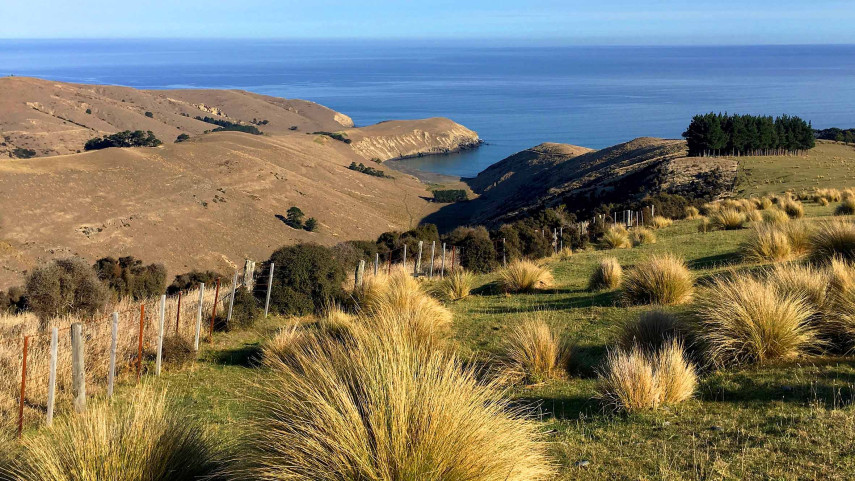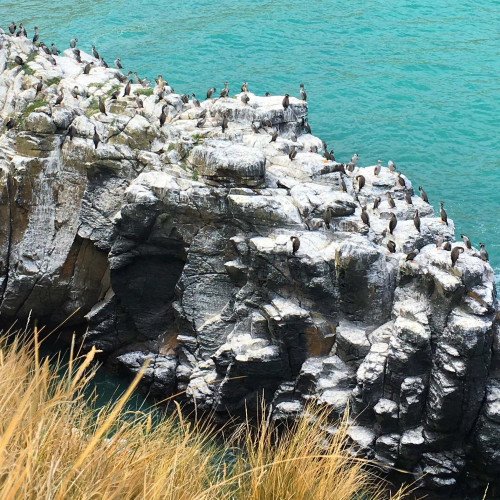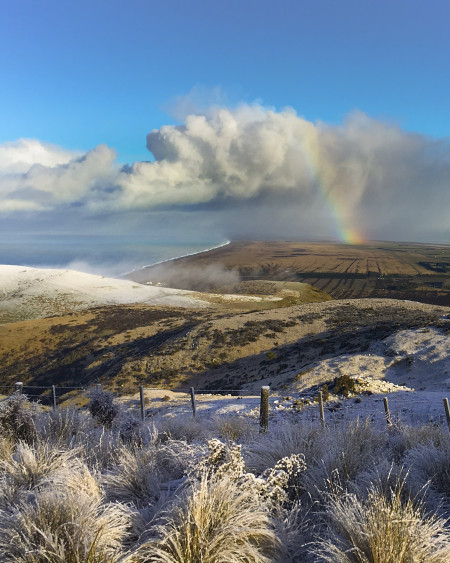
Banks Peninsula property protected for the future

Share this story
A new regional park will be established next to Wairewa/Lake Forsyth, providing space for outdoor recreation, and ongoing conservation protection.
Christchurch City Council was last year offered 526 hectares of land at 3089 Bossu Road by owners Douglas and Shay DeAngelis, who wanted to ensure the property was publicly accessible, managed for community benefit and protected by a conservation covenant.
The site will be opened for public use and managed as a regional park, with a Banks Peninsula Conservation Trust (BPCT) covenant created over the property.
Mr DeAngelis says covenants are generally only placed on areas that already have high biodiversity, rather than in the early stages of regeneration.
“The BPCT’s willingness to hold such a covenant and the Council’s willingness to acquire Oashore as a reserve with such a covenant in place were the keys to protecting Oashore in perpetuity and guaranteeing public access.”

Council Head of Parks Rupert Bool says there were many benefits to the purchase, including access to natural landscapes, indigenous biodiversity, recreation opportunities and cultural heritage.
“Given the property’s high site values, availability from a willing seller and some revenue generation from conservation-based grazing to help support operational requirements, we saw this as an asset for the community.
“The property includes one of the country’s most well-preserved historic whaling sites, the coastal headlands and cliffs serve as sanctuaries for native seabirds, and it offers significant potential for natural regeneration and restoration initiatives.
“It is strategically located and will provide access to some of Banks Peninsula’s stunning southern bays. Car parking is yet to be established.
“In addition, it holds important Māori pā and other heritage sites. A significant partnership opportunity exists with Waiwera Rūnanga - who have their own native recloaking programme on an adjacent property – to protect and enhance important sites, including lake health and taonga species.”
The current priorities are to understand the cultural heritage, biodiversity and recreational opportunities and develop a management plan to support appropriate development and access of the reserve.
Currently public access hasn’t been formalised as rangers work to ensure farm tracks, fences, gates, grazing, signage and carparking are suitable for public walking.

Banks Peninsula Conservation Trust General Manager Maree Burnett says Oashore is a significant addition to BPCT’s conservation covenants programme, as it contains many regionally and nationally important biodiversity values.
“Because of its harsh and unique microclimates, species have adapted here in many special ways. The property is distinctive botanically, with a number of nationally rare species, including fierce lancewood Pseudopanax ferox, the curious shrubby Tororaro Muehlenbeckia astonii, and blanket fern Asplenium subglandulosum.
“Oashore provides habitat for a diverse range of native invertebrates, lizards, birds, moths and cicadas. Predator control is being undertaken to protect native birds like kererū, fantails, and bellbirds from predators; white flippered little blue penguins also nest in the area and there are many pelagic seabirds that frequent its coast, which it is hoped will one day be able to nest and breed safely.
“Thanks to the generosity and foresight of the previous owner, three existing covenants (under BPCT and QEII) have protected some of the property’s most significant and valuable biodiversity for some time, including remnant forest, mixed dryland shrublands and regenerating forest gully and ridgeline.
“The BPCT are delighted and proud to ensure the biodiversity on this very special property is protected for the benefit of community now and in future generations.”
Funding for the purchase of Oashore is included in the Council’s Long Term Plan 2024-34.
